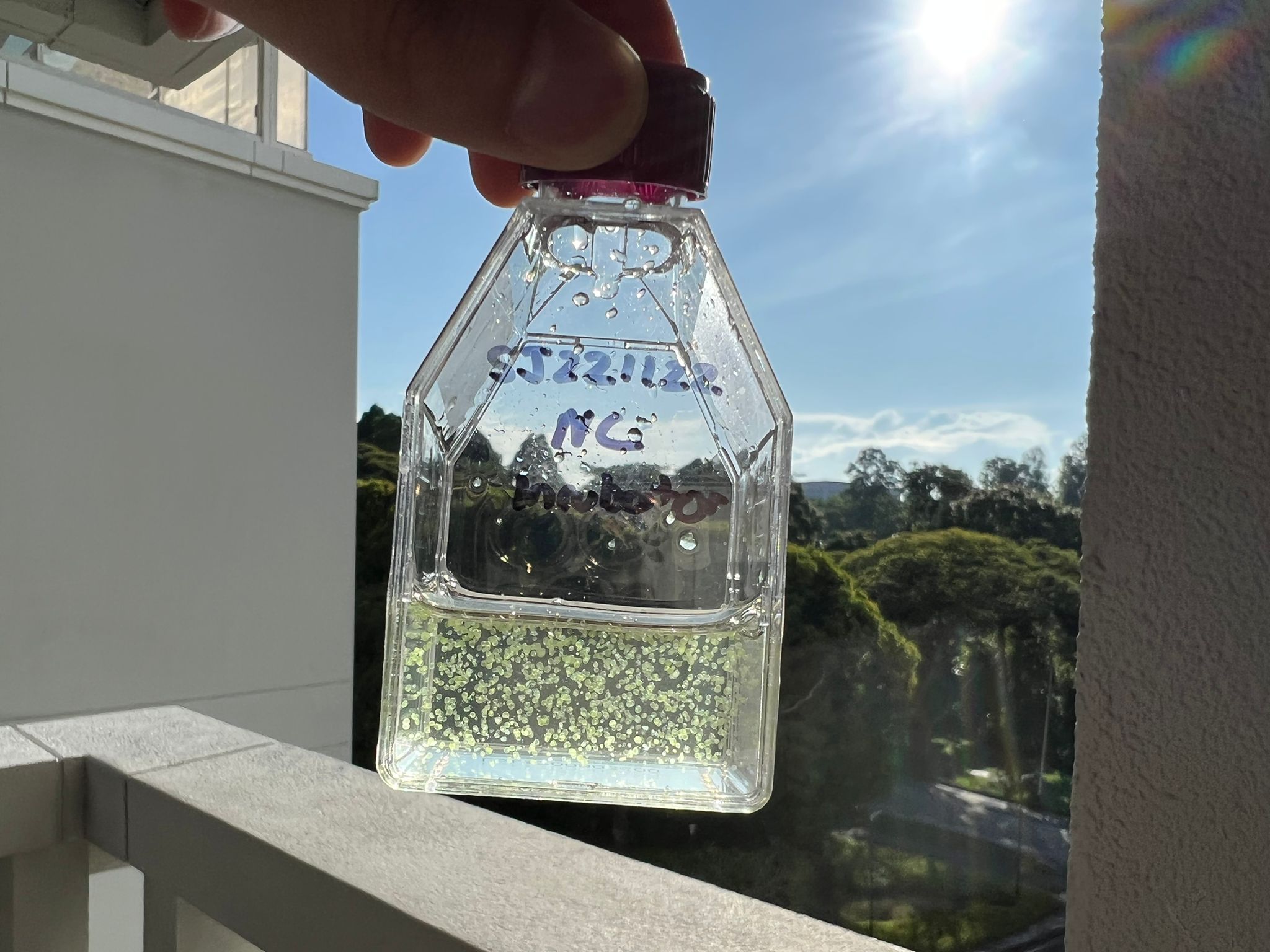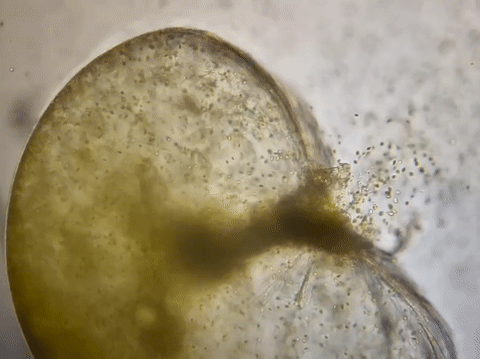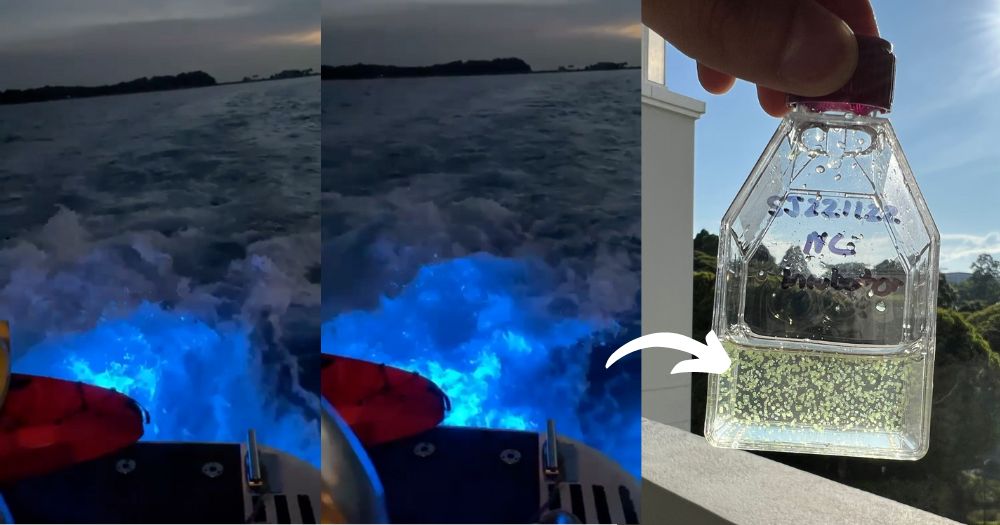Follow us on Telegram for the latest updates: https://t.me/mothershipsg
A bloom of bioluminescent microorganisms which gathered large crowds to beaches earlier this year has made a return to Singapore waters.
Blue glow spotted off Sentosa Island
A hairstylist who wished to be identified as Alan took a video of the bright blue sparkle on the night of Nov. 22.
On a yacht off Sentosa Island, the motion of the propeller made the water glow intensely.
 Video by Alan.
Video by Alan.
Alan shared the video with Clarence Sim, a PhD student from Nanyang Technological University (NTU) studying Singapore's marine plankton community.
Earlier that day, Sim found a bloom of the same unique dinoflagellates at St. John's Island and Raffles Lighthouse as part of his monthly sampling work.
Sim also studies the bioluminescent microorganism responsible for the blue glow, a species of dinoflagellates known as Noctiluca scintillans.
When it senses movement, the dinoflagellate is triggered to emit light.
It is visible to the naked eye and appear green due to the thousands of algae it hosts.
 Image by Clarence Sim.
Image by Clarence Sim.
 A dying Noctiluca scintillans expelling thousands of symbionts. Video via GEEK Lab.
A dying Noctiluca scintillans expelling thousands of symbionts. Video via GEEK Lab.
Sim suggests that the bloom's bioluminescence may be visible for the next few days at Sentosa, East Coast Park and Pasir Ris Park.
Third bloom this year
Federico Lauro, an associate professor who is the principal investigator of NTU's Singapore Laboratory for Integrative Microbial Ecology (S.L.I.M.E. Lab), told Mothership that Noctiluca scintillans blooms are harmless.
However, these recent blooms have acted as "a thermometer", indicating that the conditions are right for a more harmful algal species to bloom in Singapore waters, he said.
Lauro suggested that the recent blooms could be a sign that things in Singapore waters are changing.
Based on the current data, he believes this phenomena would only be a greater cause for concern if these blooms were to keep occurring.
Harmful algal blooms in Singapore
Lauro's lab received funding to study algal blooms in Singapore after a particularly harmful algal bloom in early 2015.
Affected coastal farms off Changi saw the death of 700,000kg of farmed fish, resulting in approximately S$1.3 million in losses per farmer.
Harmful algal blooms that caused mass fish deaths also took place in 2014, 2013 and 2009.
Since then, researchers have noted numerous algal blooms in Singapore waters, especially in the Johor Straits, but none have proven to be harmful so far.
"I'm actually surprised we haven't had a harmful algal bloom in seven years. Historically, they reoccur every year or two and kill all the fish in the aquaculture farms, and this hasn't happened in a long time."
During a bloom, algae proliferate exponentially, which can starve the water of oxygen and kill fish. Algae species that produce toxic compounds can also be harmful when they bloom.
Research from the S.L.I.M.E lab show that Singapore waters hold a baseline amount of algal species, including harmful ones, that stick around waiting for the right conditions to bloom.
While algal blooms happen from time to time, warmer temperatures and nutrient runoff into the sea can promote their emergence.
He added that he understands that the Noctiluca scintillans bloom has since died down.
Read more about the science behind the blue glow here:
Top images by Alan and Clarence Sim.
If you like what you read, follow us on Facebook, Instagram, Twitter and Telegram to get the latest updates.

